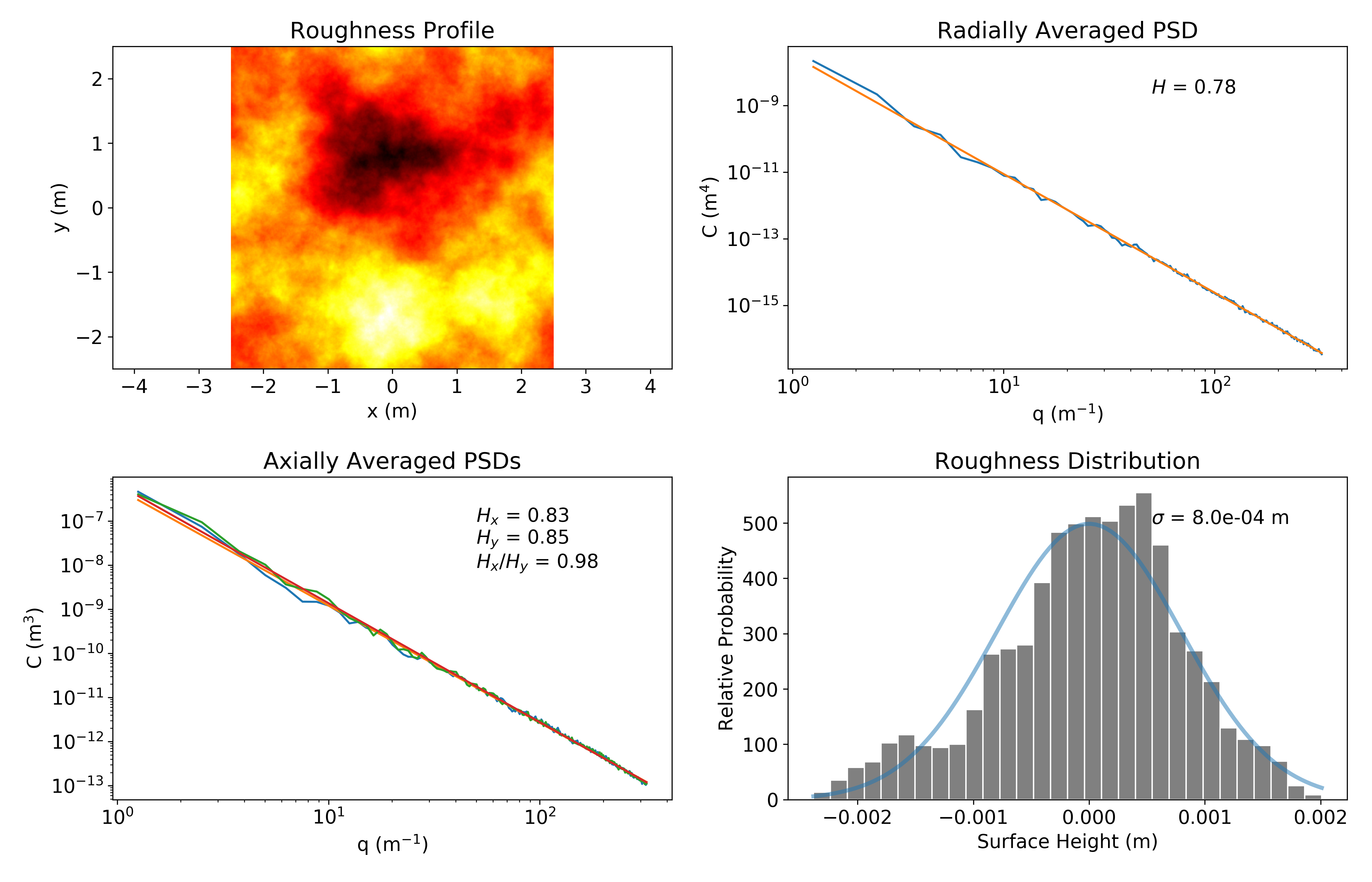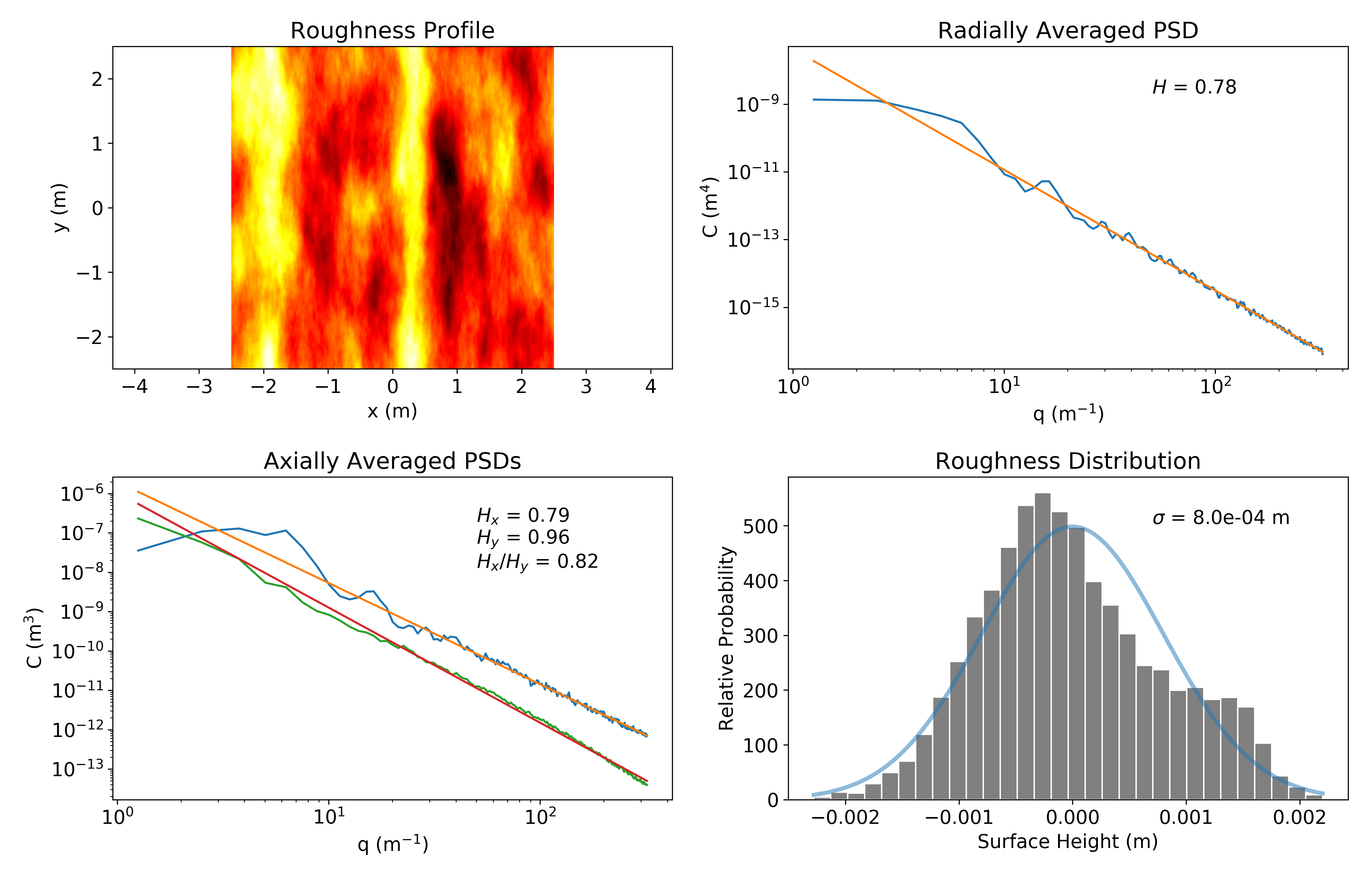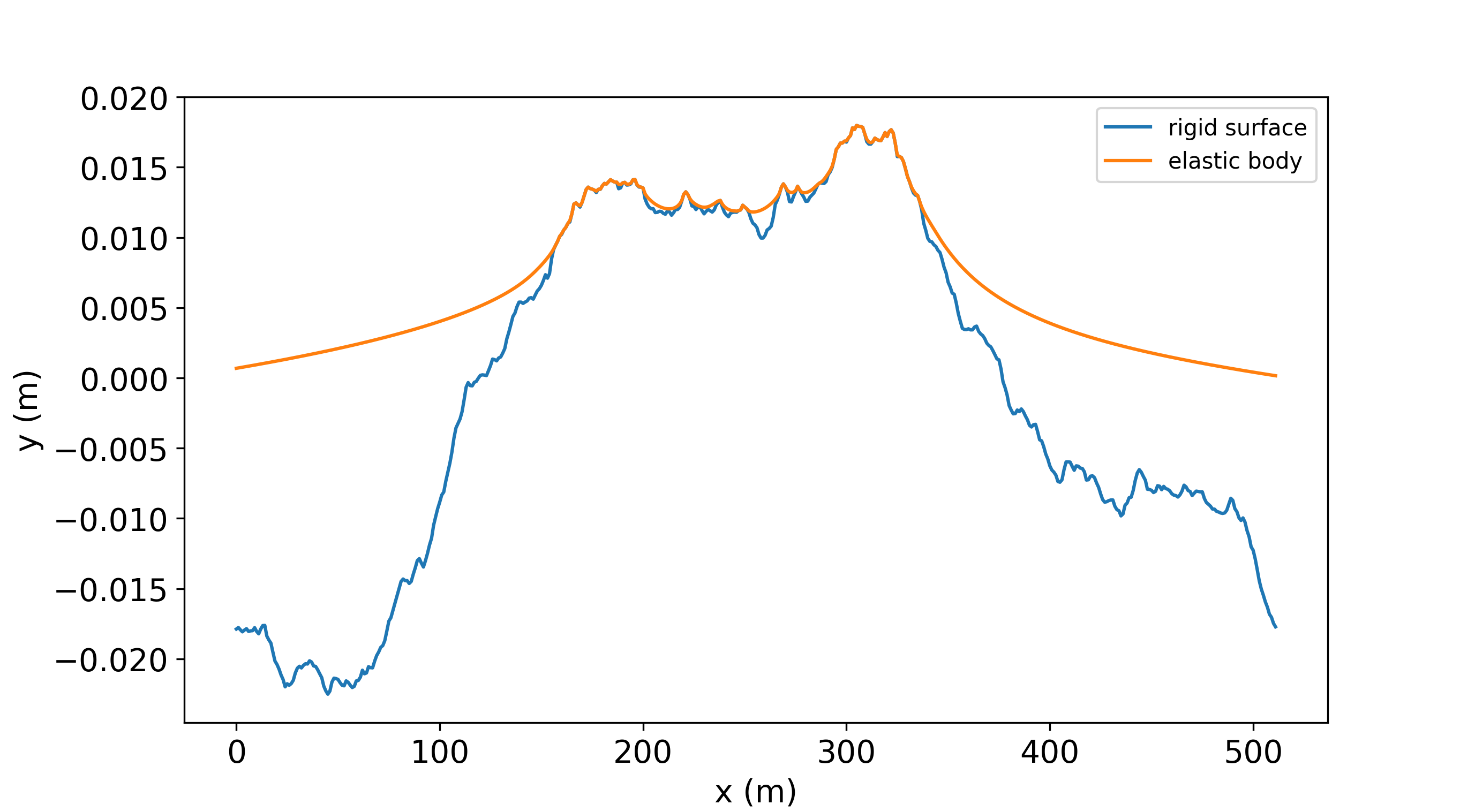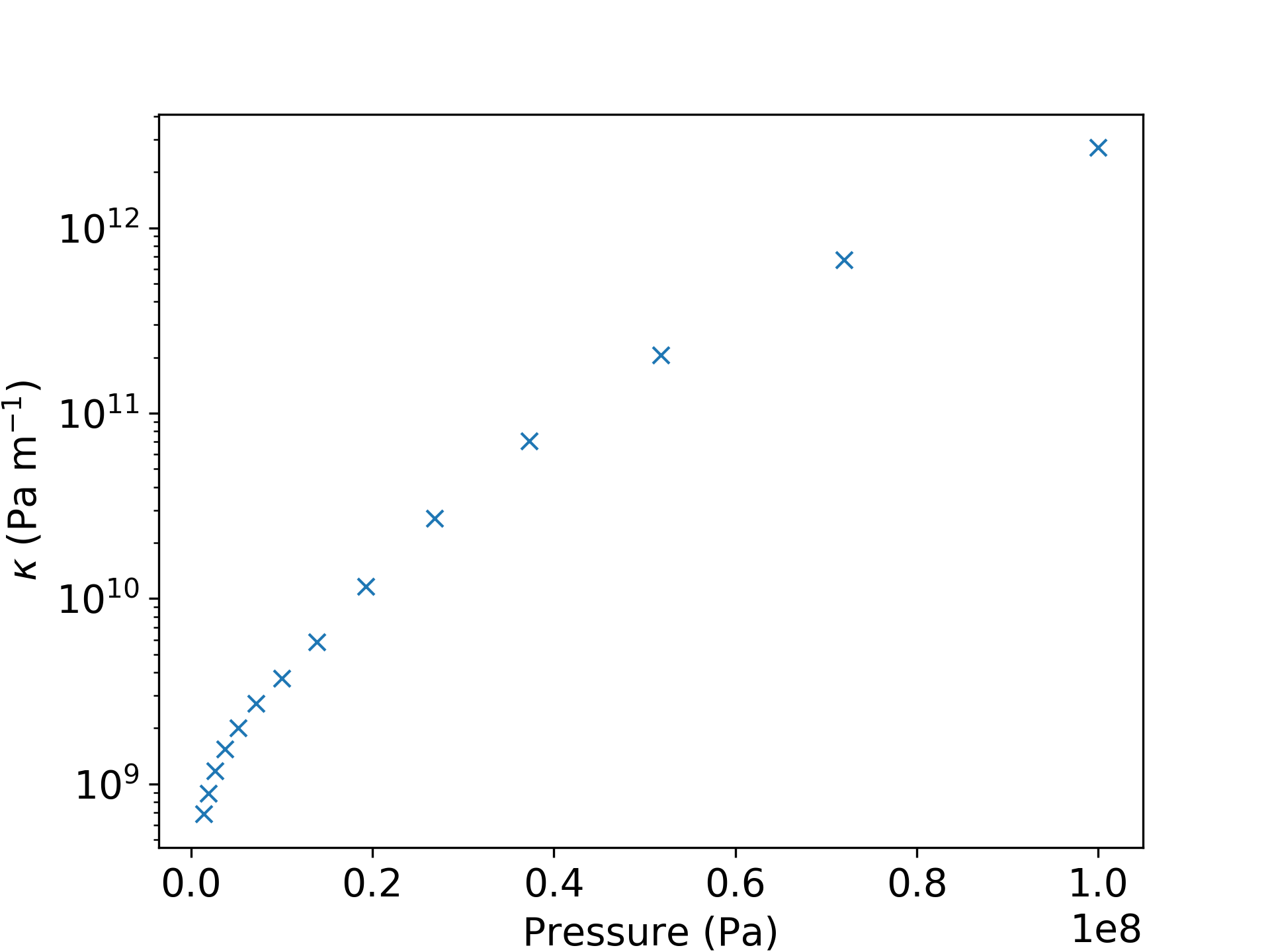rough_surfaces
A Python3 module for the analysis, elastic contact and fluid flow simulation of rock fractures.
| Platform | CI Status | Coverage |
|---|---|---|
| Linux, Python 3.6 |
Install/Contribute
Clone the repo and cd into it using a virtual environment
git clone https://github.com/plang85/rough_surfaces.git
cd rough_surfaces
python3 -m venv venv
source venv/bin/activateand verify that the tests are passing
pip install -e .[test]
pytestdo some damage and just PR against master.
To just use the module, it's still good practice to checkout the repo and use a venv, but then just do
pip install .instead. As you can see recommenden practice is to use the head at all times (if you're adventureous).
Examples
Generation
We can generate an isotropic, self-affine surface like this
import rough_surface.params as rp
import rough_surface.generate as rg
surface_params = rp.SelfAffineParameters()()
N_power_of_two = 9
surface = rg.self_affine(surface_params, N_power_of_two)where surface is essentially a two-dimensional numpy array with a lattice size attribute dxy.
Analysis
See example_analysis.py for a more complete overview and the provided plotting functions. In short, given a two-dimensional array h that represents discrete surface height uniformly spaced by dxy, the radially averaged power-spectrum can be obtained like this (this API is in flux)
import rough_surfaces.analyse as ra
spectrum = ra.radially_averaged_psd(surface)
invariants = ra.self_affine_psd_fit(*surface_spectrum)
print('Hurst = {0:.2f}'.format(invariants[1]))An isotropic surface is characterized by a near-ideal straight line radially averaged PSD and same-slope curves for the angularly averaged spectra.

An anisotropic surface is characterized by a less linear radially averaged PSD and different-slope curves for the angularly averaged spectra.

Contact (elastic frictionless)
We can solve the elastic frictionless contact between two rough surfaces by solving the equivalent problem of a rigid composite surface against an elastic, flat body of composite properties
import rough_surfaces.contact as rc
nominal_stress = 1.0E7
E = 1.0E+9
nu = 0.3
contact = rc.contact_FFT(composite_surface, nominal_stress, E, nu, verbose=1)For a more detailed snippet see example_analysis.py.


We can also use a high-level function to compute the stiffness over a range of stresses
nominal_stress = np.logspace(6, 8, 15)
stiffness = rc.stiffness(nominal_stress, surface, E, nu, err_lim=1.0E-8)

Flow (steady-state laminar flow fluid pressure)
Working on porting this still...
Publications
Lang, P. S., Paluszny, A., & Zimmerman, R. W. (2015). Hydraulic sealing due to pressure solution contact zone growth in siliciclastic rock fractures. Journal of Geophysical Research: Solid Earth, 120(6), 4080–4101. http://doi.org/10.1002/2015JB011968
Lang, P. S., Paluszny, A., & Zimmerman, R. W. (2016). Evolution of fracture normal stiffness due to pressure dissolution and precipitation. International Journal of Rock Mechanics and Mining Sciences, 88, 12–22. http://doi.org/10.1016/j.ijrmms.2016.06.004
Lang, P. S. (2016). Multi-scale modelling of coupled thermo-hydro-mechanical-chemical processes in fractured rocks. Doctoral Thesis, Imperial College. http://hdl.handle.net/10044/1/45644